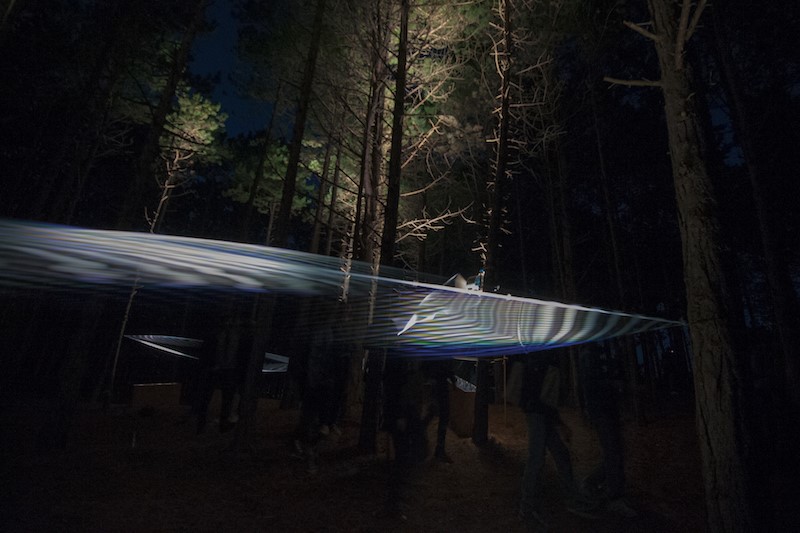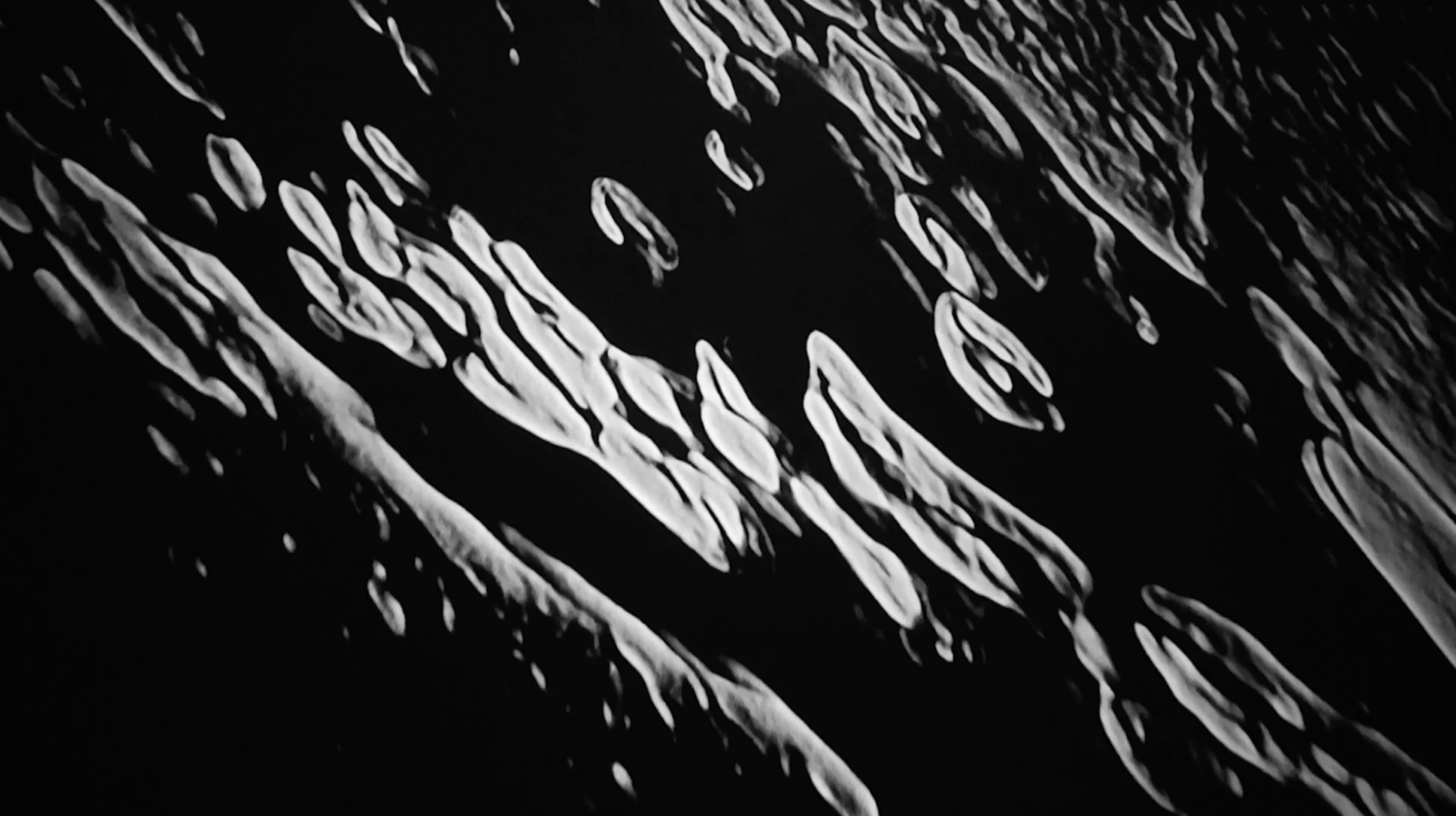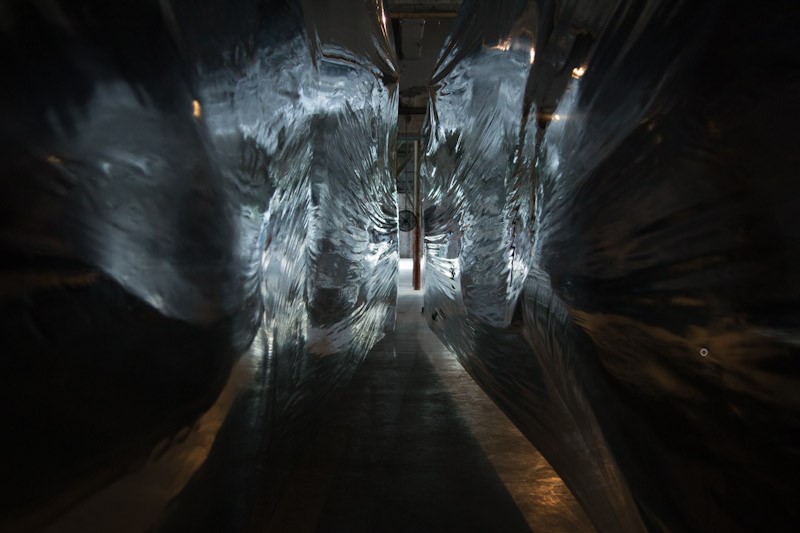Meet iii-resident Mischa Daams
Mischa Daams (1986) lives and works in The Hague. He has a BA in Multimedia Design and he finished his master in ArtScience at the Royal Academy of Arts and the Royal Conservatory in The Hague in 2013. His work has been exhibited both nationally and internationally.
We meet in his studio and as we walk around Mischa tells me about the projects he is currently working on. He shows me a tower of different materials. Work in progress. Do you always make a prototype?
Yes, I have to, I have ideas in my head and sometimes they are more specific. When I make a prototype, new variations of my initial idea arise. Or it does not work out the way I thought it would. That could even be something that is actually more interesting than what I was looking for. In this case, I don’t know yet. I try to figure out if I can make what I have in mind and make it more complex step by step.
Does it work the other way around as well? From complex to more simple?
When I was studying, I worked on a project for over a year which involved computers, software and calibration. It was hard and it did not evolve as much as I wanted. My teacher suggested doing something else instead. Two or three years after my graduation, I got back to that work. Keeping in mind that it could be done more easily. I removed all the bullshit and I developed it into a new work. The work was finally finished.
I am currently working on something that started very simple. I was queuing for the cash desk in the supermarket and there was an olive oil bottle on the conveyor belt. The belt started to move and when the belt stopped, the bottle started to rock back and forth. A random customer next in line and I were captivated by this -seemingly timeless- moment. This moment of tension, the rocking of the bottle and whether it falls or not, that is something that fascinates me quite a lot. My proposal for the iii residencies is based on the behaviour of this event. Now, I am trying to find this moment of tension and I am trying to control that. I have been busy for two weeks now and I feel like I am getting somewhere. I am very excited that it turns out into something pleasing now.
This work has a deadline, there is a performance planned, and for example, the work you made for festival Into The Great Wide Open as well. How does that work for you?
That works out well, I need deadlines to make decisions. To keep the process going, to keep the momentum. When it is more open-ended I can easily lose my focus. When there is a deadline, the work gets the time and energy it needs.
The work for Into The Great Wide Open was a collaboration with my friend and fellow artist Philip Vermeulen. He was offered to make a commissioned piece and he asked me to develop new work together. We selected a proto-work that we started as an experiment at a previous iii residency a couple of years ago.

Are you a team player or do you prefer to work solo?
I used to figure out everything myself, but at some point, I realised that I have my limitations- for instance on technical skills. So if a work requires specific skills, I ask people that are way better in for example mechanics or software development. I like the idea of having people around me, so I can achieve more and we can discuss solutions. When it is just you, you can hesitate or linger longer. While you are collaborating, you have instant feedback and you can move along.
How would you describe yourself? As an artist, a researcher or a scientist?
Mainly as an artist. As far as I know, I have never contributed anything to a science yet. But I am truly inspired by science. When I take my work Origin as an example, it is based on the idea of mutations. When you copy a photo, zoom in slightly, make a copy again, zoom in again, etcetera, you lose some of the information and it results in mutations. An aesthetic world arises, which I started to see as a living thing. It is just a process of reproduction. Mutations can lead to new forms. I am intrigued by the network structure of our brains, I am intrigued by the elusive. It does exist.
When you compare me with a scientist, I guess we both have a certain curiosity in common. I am interested in materials, media and phenomena. And I am curious about the origins of human behaviour, like consciousness and perception.
Do patterns fascinate you?
Yes, a lot. Behind every pattern that we can see, there is an explanation. It can be man-made, like a pattern in the Alhambra in Granada, Spain. But nature is pretty good as well in making patterns. These are building blocks and it is some sort of code. I find that fascinating and it comes back in almost every work.
Now I am exploring how gravity works and how things fall, that is another starting point, I guess. Moreover, it has to do with the fact that you are programmed to expect certain things as humans. Patterns of expectations. I am playing with the idea of the expectation that something falls, but it doesn’t. That is interesting, it is some sort of glitch. You can recognize a pattern. That is probably my main motivation behind this search.


Have you got an audience in mind when working on a new project?
No, not from the start, but it depends a bit. In the case of the Into The Great Wide Open festival, I know more about the audience and the context. The artwork will be displayed in the dunes of Vlieland, for example. But when I have an idea in mind and make a prototype, I don’t always have in front of me how it will reveal. That usually comes later.
Does that sometimes lead to something unexpected?
Sure, sometimes something does not work the way I thought. Sometimes I come to that conclusion myself when I make a prototype. In that case, I can try and do my best to adjust or I have to see and accept the value of what comes out instead.
When you compare your work in the last couple of years, do you see any change?
Yes, but it happens in loops or actually more like a spiral, it is not linear. It is not that I leave everything behind and move on to something completely new. I think I give myself room to do new things with other media for example when I compare that to some years ago. Last time I needed quite some air after I worked on a long and intense project.
Something that resonates in what I am doing now, is about steering or controlling. Controlling a machine for example and cybernetics. The exchange between powers, forces, the audience and the object is something that you can see a lot in my work.
What did you learn on the academy that affects your work today?
It is something that one of my teachers said. He told me to always be precise. That statement certainly helps me figuring out what I am doing. When I know that, I can find the limitations, the boundaries. From there I can explore where the unknown is and what hidden gems I can find, for instance in terms of unexpected behaviour. This is more relevant when working with complex patterns like I do. If you don’t know anything, everything is like magic, but it stays vague. That gets you nowhere. I’d rather make an attempt to master it.

In what way play everyday objects or situations a role in your work? Like the bottle on the conveyor belt in the supermarket?
They don’t always play a role, but it is nice to find such examples. When you come across something in everyday life and you learn to watch in a certain way, it can inspire you all the time. It can even be a starting point for something that you want to show to an audience.
I guess using those everyday perceptions directly in my work is new to me. That is a good thing. I was struggling with my project for the iii residencies, the bottle and the belt, for the last two weeks. I was not sure if I was on the right track. I started with this basic idea of the bottle and the belt, but at a certain point, I don’t know which way to turn. That stupid bottle. The fact that ideas don’t work out and that I have no clue how to solve it. But I am happy that I kept trying because I found a way how to approach it. I was not sure what I was looking for, but now I found it, I am very excited.
In this new form, I see a connection with previous works. Respire for example is a spatial work. It is a tunnel of foil and it dictated how the audience moves. Air is blown in from two sides, the tunnel expands and changes shape. The shape of the tunnel is a dialogue between the person inside the tunnel and the material. This ultimately results in visually attractive, almost hypnotic work.
Is this important?
Not really, well, I am not looking for the most aesthetic image from the start, I focus more on the behaviour. Behaviour is the starting point. But because I research something that I have never done before, there are often surprising results in both behaviour and in visual aesthetics. I don’t like it to be messy, but on the other hand, it is the way it is. Like the belt, I am using for my iii residencies project. And the foil I used for Respire. The foil was just a foil. Plastics. If you apply a force on it in a certain way, it becomes a living thing.
The second time I displayed Respire, it was completely different. That had to do with the spatial composition, the exhibition space was very different. To me, it felt like a new work. It gave me energy. The dynamics of showing work satisfy me.
It allows me to develop work further when it is displayed again. In that sense work is never finished, the context puts the work in a different light. It brings me as an artist something new. Philip and I would like to bring the work we did for Into The Great Wide Open to Brazil. That is a challenge as it is a completely different landscape. It requires thinking about how to make it work there. To reinvent the way we display the work.

What do you see as a challenge?
The more technical side of things is a challenge for me. But also the way to come from an idea to actual work. I see a challenge in this search, but also a lot of frustration and pleasure. I enjoy the fact that something arises in the process, which is intuitive in most cases. Sometimes an idea doesn’t work, that is fine too. I put it aside and that is ok.
And as an artist?
The challenge is to keep being an artist at the number one position. I have to force myself to claim time and space, it needs a lot of discipline. In the last years, I did not get the chance to start many new things and it felt like I needed a reboot. I think that is part of the job and I accept that. I know I have so many ideas in notebooks that I can just pick up and get started. But you need to take the time. Not just an afternoon. But a deep dive.
I am looking forward to exploring new things. Sometimes distance is also good to value what you have and what you want. This is the most valuable aspect.
What I like to explore further is the way that the brain works and its role in the different states of being. I read about this and it is a source of inspiration. I am quite eager to learn. All in all our behaviour is just another pattern, isn’t it? But what lies beneath this pattern? And (how) can we affect them? Philosophers have been speculating for thousands of years on the origins of what we call consciousness/reality and nowadays science is seemingly getting closer. And still, there is so much that we don’t know at all. Although not every work has a direct link with such questions, they resonate, which sure contributes to motivation for making work.